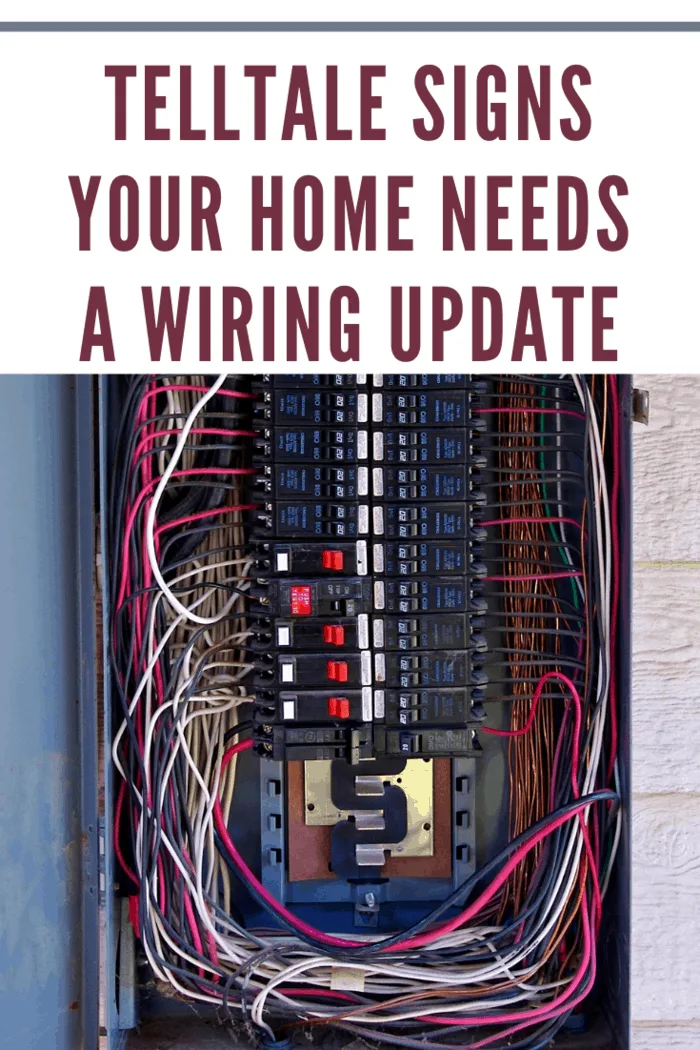When moving into an old home, the most troubling issues are those related to electricity. Getting shocked electrically by touching a metal pipe in your home or one of your appliances can be pretty painful. It doesn’t take much for an electric shock to be lethal.
According to Academic, A shock with around 1 0 milliamps can kill you. Unstable voltages can quickly kill and damage your valuable appliances and electronics. If your home’s wiring is decades old, it may not have the capacity to handle the demands of your current devices. Overloaded electrical wiring can heat up and cause an electrical fire. These problems can easily be solved by repairing the home’s wiring. However, they’re hard to spot.
Here are telltale signs your home may need a wiring update.

Your Home is 30 Years Old or Older
Any piece of equipment is bound to degrade over time, especially those constantly used. This is especially true for electrical wiring in older homes. Houses built in the 70s and earlier likely have knob and tube wiring. K&T wiring involves running a system of copper conductors through tubes organized by porcelain knobs.
K&T was a good system at the time, but it’s considered outdated and even dangerous by today’s standards, says InterNACHI. This is because it lacks ground wiring, which protects you and your appliances from stray currents from short circuits and power surges. If they’re surrounded by insulation, they could also heat up and cause a full-blown electrical fire.
Plus, if your home is old, its copper wiring may also be worn out, leading to power issues in some of your outlets or lights.
Aluminum Wiring
During the late ’60s and early ’70s, copper prices went drastically up, leading most homeowners to settle for using solid aluminum for their electrical wiring. This worked well for a few years. However, some noticed that this material degraded faster than copper, as outlet and lighting connections started to become unstable and overheat.
The Consumer Product Safety Commission stated that homes with aluminum wiring are 55 times more likely to have connections that create fire hazards than those with copper wiring (CPSC). This is because aluminum degrades significantly faster and is more sensitive to heat than copper.
Outlet Issues
Wiring issues are easy to spot when using your home’s electrical outlets.
Here are things you should keep an eye on:
• Ungrounded and Dangerous Outlets –
Grounded outlets have at least three holes: one for the neutral wire, one for the hot wire, and one for the ground wire. If it only has two holes, it’s highly likely that your connections aren’t grounded, leading to possible electric shocks when you touch metal parts of your appliances or gradual damage to your electronics. Stray current may cause arcing that can fire your wall or furniture.
• Scorched Outlets –
Outlets with scorch marks should be considered dangerous even if they work. There may have been an electrical issue that damaged it and its wiring permanently.
• Lack of Outlets –
While power strips are great at distributing energy across multiple devices and appliances, you should do your best to spread your devices’ load evenly across your home’s different outlets. If you don’t have enough of them, you need to hire a licensed electrical contractor to update your home’s wiring to accommodate your needs.
What to Expect from an Old Home – Apart from Electrical Problems
A variety of benefits come with buying or renting an old house. For one, you can get a well-kept house for a more affordable price with low property taxes. It’s also possible that you will get a home with a more considerable lot than modern ones. This is because older houses were built when the land wasn’t as scarce. There’s also the allure of vintage architecture if the home has been around for decades.
Buying an old home is excellent if you can get one that ticks all the boxes in your house-hunting checklist for a reasonable price. However, living in an old house is not always rainbows and sunshine. It also comes with different disadvantages. These include foundation and structural issues brought upon by materials that may have rotted or corroded throughout the years. Some vintage homes may also be built with dangerous building materials like asbestos. This is often found in homes built before 1978.
Electrical problems continue to be the most prevalent and dangerous issue among older houses. If you find these issues in your home, you need to call a professional and get them repaired immediately. With an up-to-date electrical system, you can rest easy knowing you and your appliances are safe.
